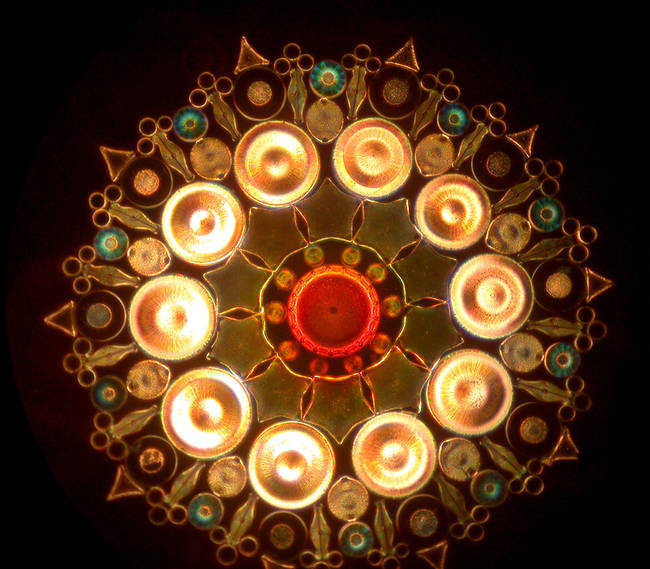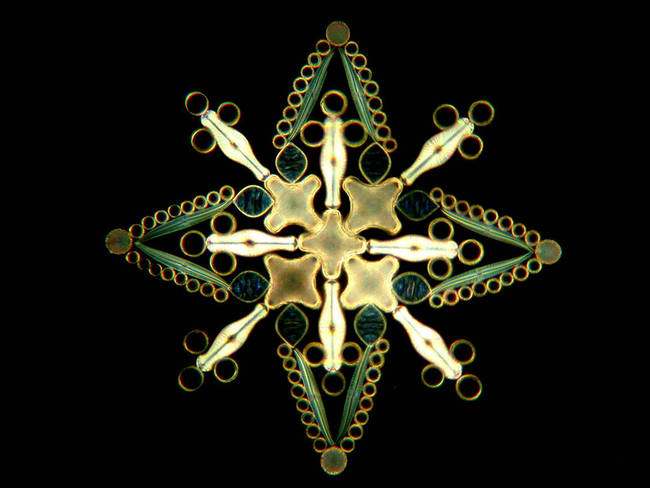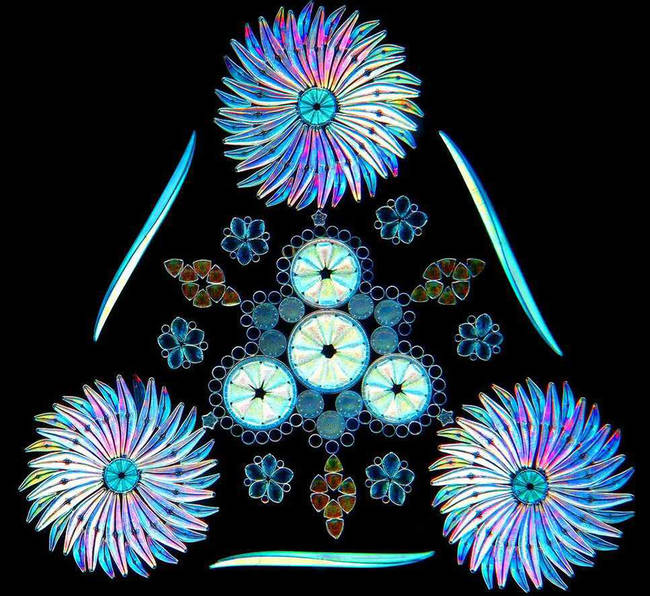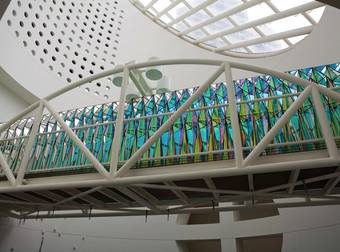A diatom is a single-celled organism and a type of algae. Diatoms are commonly used in scientific fields for monitoring water quality and environmental conditions. They may also be used in the future development of nanotechnology.
Emerging as early as before the Jurassic Period, these tiny organisms are some of the smallest on the planet, and also the most beautiful. Encased in shells, they resemble jewels or fancy buttons more than living things, and are often found in water, including gutters, puddles and ponds. You came in contact with these little guys before; you might have swallowed a few, and you never even knew!
Diatoms are used to study environments of today and the past (using fossil evidence), but their beauty is never overlooked. Arrangements of these microscopic beasties were created since the Victorian period. Recently, artist and diatom-enthusiast Klaus Kemp worked to recreate the complex, mandala-like arrangements. His creations are some of the most intricate created today. You would never even see them with the naked eye, as diatoms are measured in microns. Each arrangement is itself microscopic, and must be viewed under a microscope.
Matthew Killip worked with Kemp and created a short film to explain the process of finding, catching, cleaning, and arranging the diatoms.
Kemp explains that he first saw a diatom arrangement at the age of 16 and “it was love at first sight.” He knows the work is “obsessive,” but doesn’t seem to mind. As a result of his dedication, Kemp’s work is highly sought by collectors from around the world. So the next time you dip your toes into a lake, or walk through a puddle, remember that you share a planet with these incredible creatures.
 share
share
 share
share
 share
share
 share
share
 share
share
 share
share
 share
share



